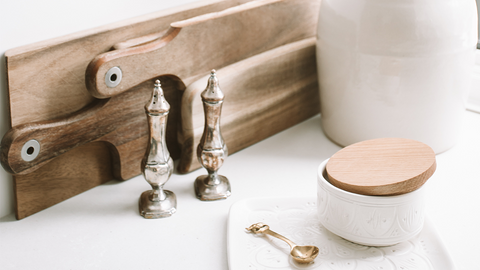Porterhouse | BMS 7+ Wagyu


Learn about how we label beef and Beef Grading Standards
A porterhouse steak is a great cut of beef because it combines two different cuts, the tenderloin and the strip steak, into one large steak, giving you the best of both worlds in terms of tenderness and flavor. Additionally, porterhouse steaks are typically cut thick, allowing for a nice sear on the outside while maintaining a juicy and flavorful center. Finally, the marbling of fat in the meat adds to the flavor and tenderness of the steak.
This porterhouse in particular is quite amazing, its Marble Score of 7+ means it is a richer and denser cut of steak. It has a gorgeous webbing of fat that will make you feel a creamy mouth-feel in each bite. Its literally like tasting a cloud... a cloud of beef.
Like all of our steaks, they come vacuum sealed and have been hand-cut by our expert butchers.

Best Cooked: Medium-Rare, Medium, Medium-Well
T-BONE vs PORTERHOUSE?
The Porterhouse and the T-Bone are similar steaks, both are cut from the short-loin and both have effectively a Kansas (Bone In New York Strip) and a Filet Mignon. However, the Porterhouse has a larger filet mignon.
For a T-bone steak to qualify as a porterhouse, the United States Department of Agriculture says that the filet is required to be at least 1.25 inches thick. Thickness is measured from the bone to the widest point on the filet
So effectively, the Porterhouse is effectively a T-Bone but the T-Bone is NOT a porterhouse. The Porterhouse is the more premium (and more expensive) steak.
HOW DO I COOK A PORTERHOUSE STEAK?
We believe a reverse sear (indirect heat) or sous vide is the best way to cook a porterhouse steak. This way you avoid overcooking either the filet or the new york strip.
That said... the tried and true cast iron skillet method works on a stovetop:
-
Remove the steak from the refrigerator about an hour before cooking to allow it to come to room temperature. This will help it cook more evenly.
-
Preheat a cast iron skillet or other heavy-bottomed pan over medium-high heat for several minutes until it's hot.
-
While the pan is heating up, season the steak generously with salt and pepper on both sides.
-
Once the pan is hot, add a tablespoon of oil or butter and swirl it around to coat the bottom of the pan.
-
Place the steak in the pan and let it sear for about 2-3 minutes on each side, until it develops a crust. Use tongs to flip the steak, as using a fork will pierce the meat and release juices.
-
Once both sides are nicely browned, reduce the heat to medium and continue to cook the steak until it reaches your desired level of doneness. For a 1-inch-thick steak, this will take about 3-4 minutes per side for medium-rare, 4-5 minutes for medium, and 5-6 minutes for medium-well.
-
Use a meat thermometer to check the internal temperature of the steak. The USDA recommends a minimum internal temperature of 145°F (63°C) for steak, but you may prefer a different temperature.
-
Once the steak is done, remove it from the pan and let it rest for several minutes to allow the juices to redistribute. Serve with your favorite sides, such as roasted vegetables or mashed potatoes.
Note: For best results, use a meat thermometer to check the internal temperature of the steak to ensure that it is cooked to your desired level of doneness.
BMS6-7? HOW DOES THAT WORK?
Steers are graded based on the amount and distribution of marbling in the ribeye muscle at the cut surface after the carcass has been ribbed between the 12th and 13th ribs.
The strip is cut from the short loin, from a muscle that does little work, like the filet.








